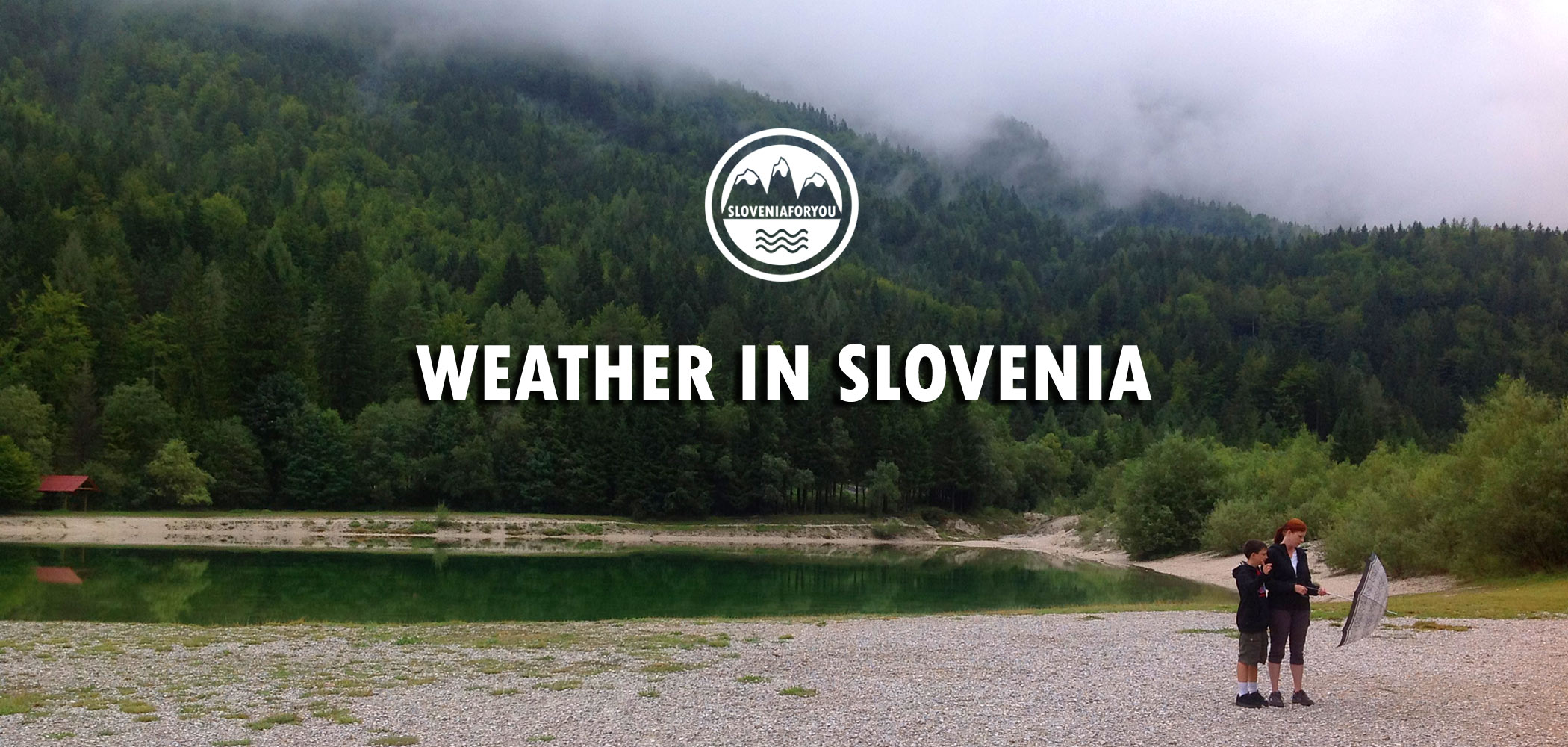
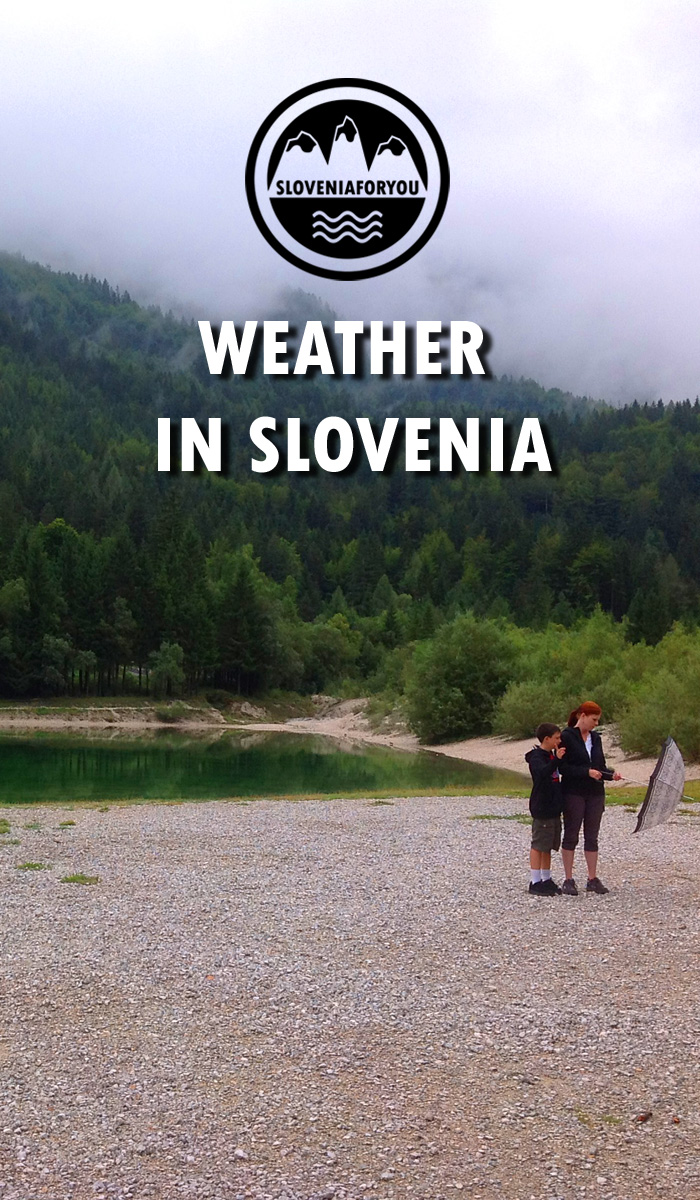
Your Complete Guide to Weather in Slovenia
welcome
dobrodošli
Sloveniaforyou
Slovenia's no1 independent website!
Planning your Slovenia holiday? With over 20 years experience, let us help!

Don't stress, our partners in Slovenia have the best customer service! Browse and Get a Quote -

Need a ride from A to B or C? Email us for a competitive quote anywhere in Slovenia and beyond!

Stay with locals at a guest house! Browse and book via our link -

If staying on the coast, a ferry trip to Venice could be a perfect day out! -

Choose from a myriad of day trips and activities -
Book an exciting day tour or activity!
What is the best time or best month to visit Slovenia?
Sloveniaforyou has compiled a comprehensive guide to Slovenia's climate featuring monthly average high and low (maximum/minimum) temperatures
for all the major cities and towns.
Read our seasonal review so you can pick to best time to visit Slovenia!

SPRING IN SLOVENIA (March/April/May)
Slovenia awakens again from its hibernation. The melting snow turns rivers and waterfalls into gushing currents that wash down through the valleys coming
into full bloom. The weather is unpredictable but its a great time to be spontaneous. Get out there and feel the changing of the season.
Once in full swing, Slovenia basks in the excitement of warmer times ahead. Some days remain cold, some clear and sunny, some days wet and
miserable, some days windy, some days still. By May, the polo shirts and Raybans are back in vogue. Let the good times roll.
Booking.com
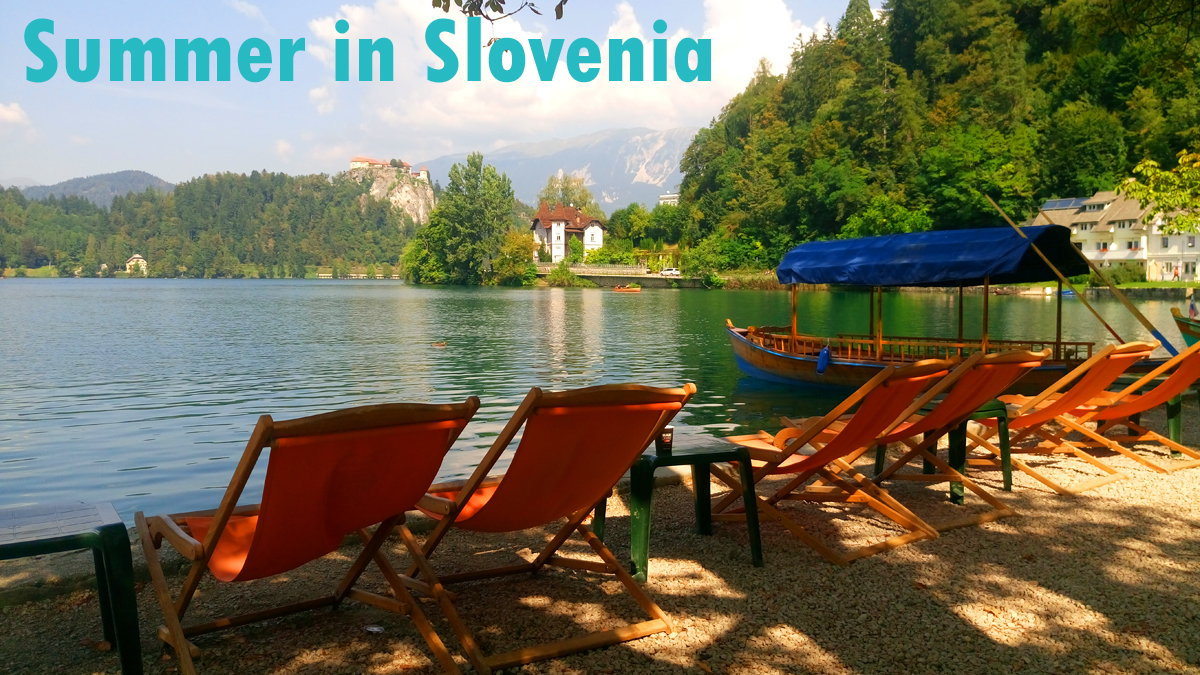
SUMMER IN SLOVENIA (June/July/August)
Temperatures in Slovenia soar into the thirties (30C, 87F) in July and August and most of the country bakes in golden splendour except for the alpine north west (Kranjska Gora, Bled)
where temperatures are generally cooler by the odd 5 or 10 degrees centigrade (perfect for hiking and walking).
The warmish weather can throw up days with short and sharp storm activity with spectacular displays of lightning for all.
Despite the queues at major attractions, summer is a great time to visit.
Many people like to sightsee in the cool of the morning, enjoy a long lunch in the shade of a local gostilna or perhaps take a swim in the plethora of watering holes around the country. In the evening, what better way to take in the local culture than a leisurely stroll with an ice cream before heading off for dinner and maybe a spot of late evening drinking at a local drinking hole.


>> CLICK HERE TO BOOK A GREAT SUMMER TOUR
>> CLICK HERE TO BOOK THE FERRY PIRAN to VENICE

AUTUMN IN SLOVENIA (Sept./Oct./Nov.)
Autumn is also a brilliant time to visit. The crowds thin out as workers go back to the office and school recommences. From September,
the temperature drops down into the comfortable early to mid 20's and the waters are still warm enough for a relaxing dip. Magnificent autumn
colours abound and the weather is still good for hiking, walking and anything else you care to do.
The guest houses and campsites wind down,
and restaurants and cafes start the gloomy task of packing up their outdoor furniture. With the cooler weather, expect a little
more rain going into October and especially November as the locals begin storing firewood for the oncoming winter.


>> CLICK HERE TO DISCOVER SLOVENIA'S WINE REGIONS
>> CLICK HERE TO BOOK THE CHEAPEST SHARED TRANSFERS

WINTER IN SLOVENIA (Dec./Jan./Feb.)
If you're not coming to Slovenia to indulge in the many winter activities like skiing or skating, then the bleakness of winter might appear gloomy
to most. The weather is cold in most of the country and only a tad warmer on the coast. The winds can be fierce and snow can fall at any time.
Having said that, Slovenia can still be a magical place. The ski resorts do a roaring trade in apres-ski cocktails and on clear, crisp days, Ljubljana's
streets glisten with curtains of crystallised icicles on a background of white calm.


>> CLICK HERE TO DISCOVER SLOVENIA'S SKI RESORTS
>> CLICK HERE TO BOOK A RENTAL CAR in SLOVENIA
Monthly Temperatures in Slovenia by Location

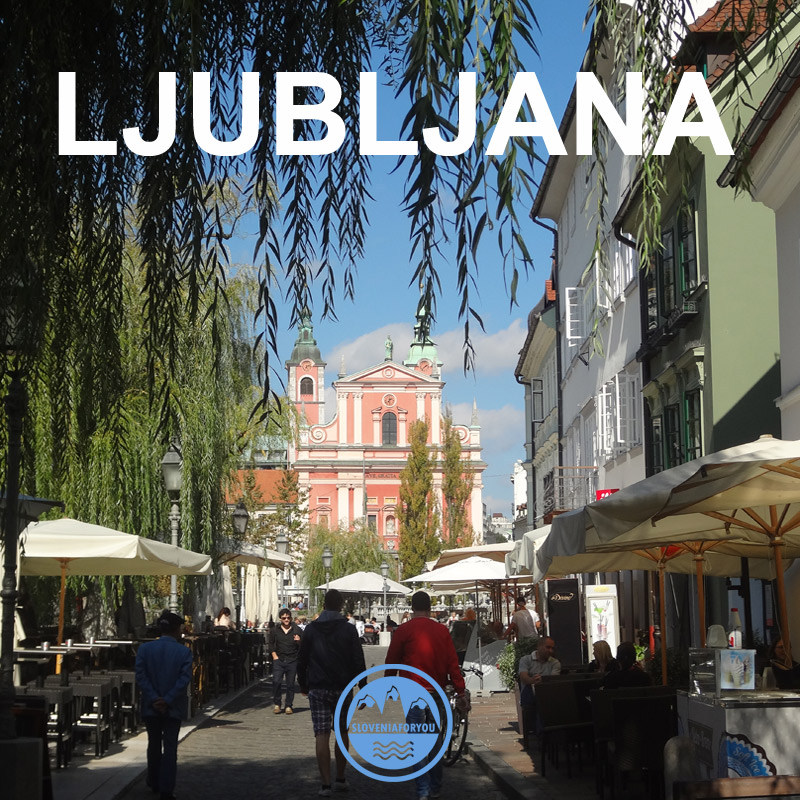
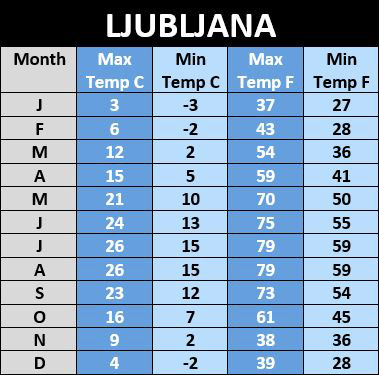
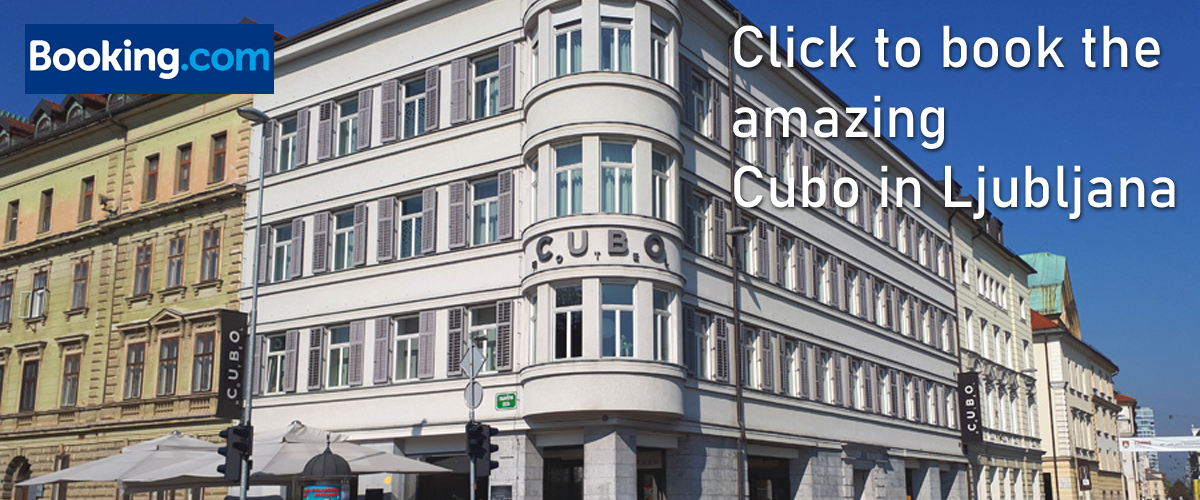

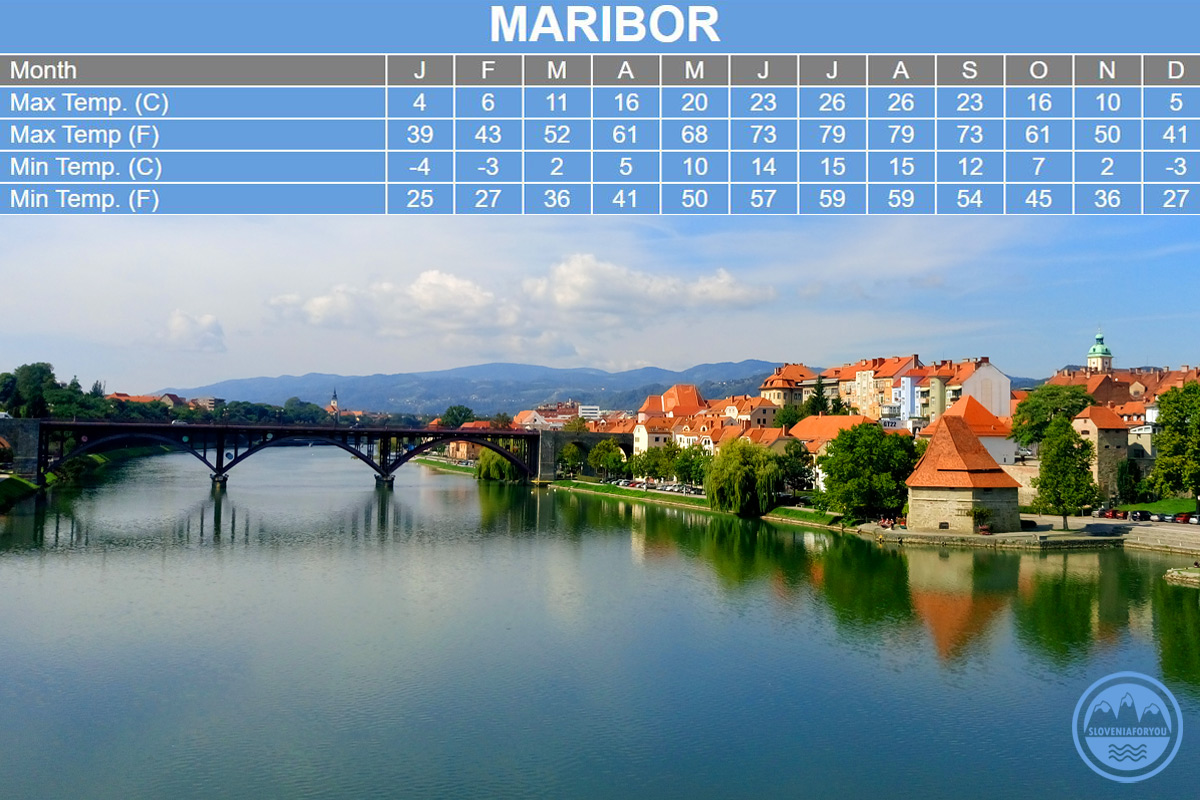
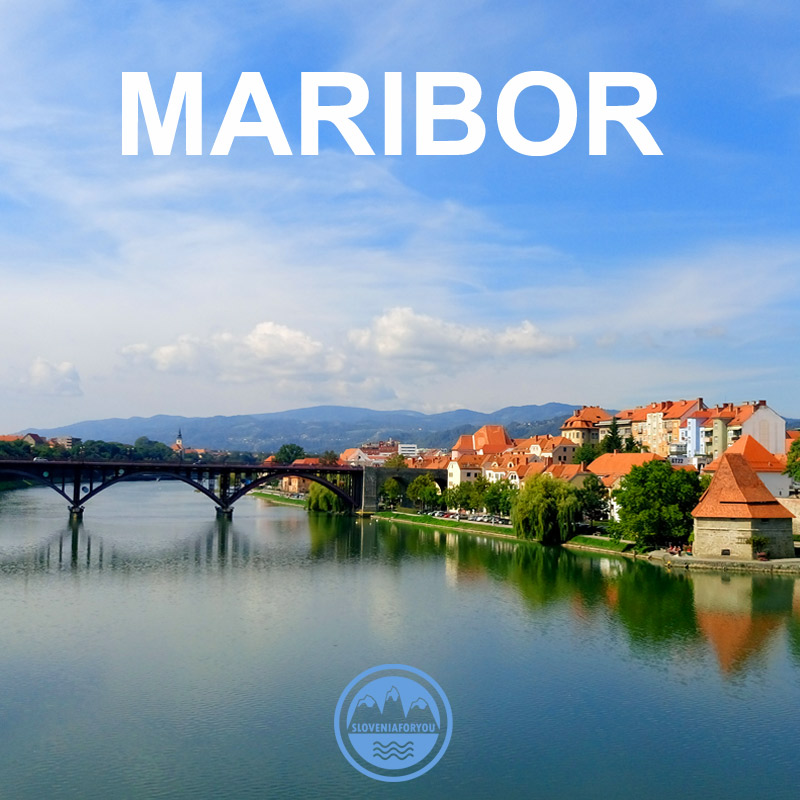
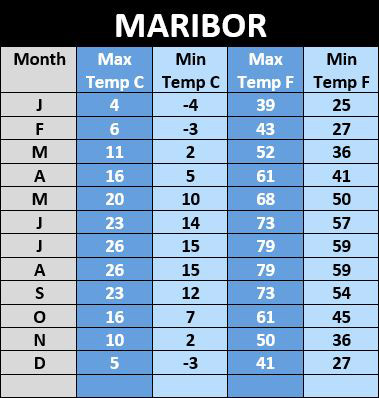
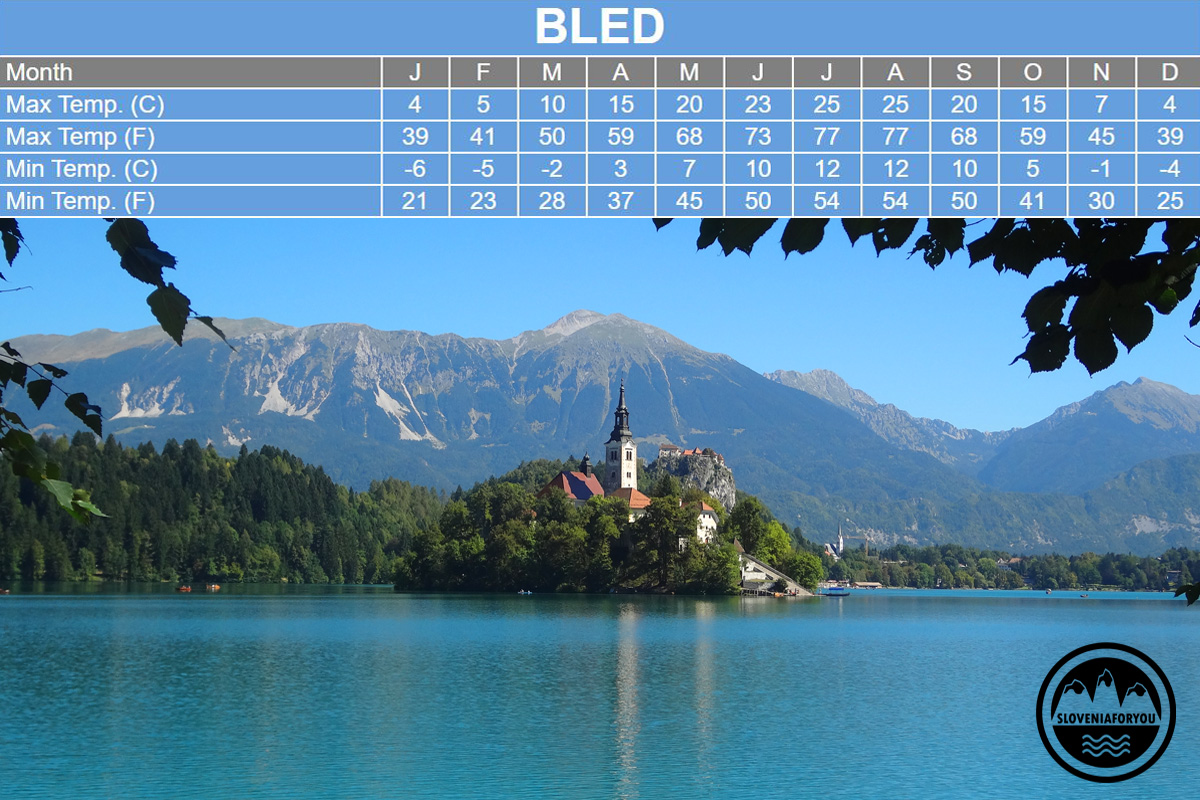
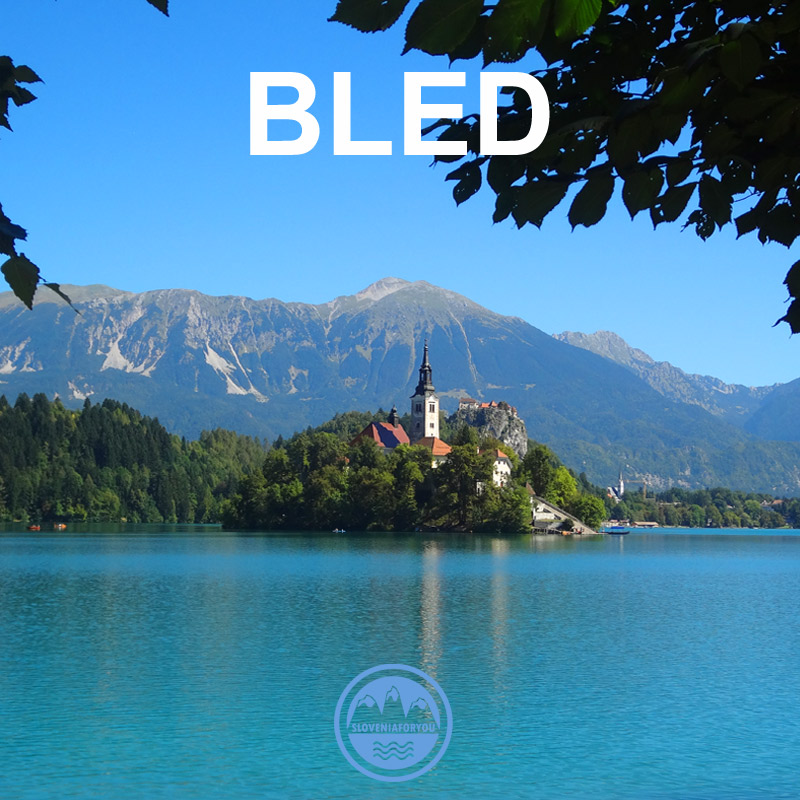
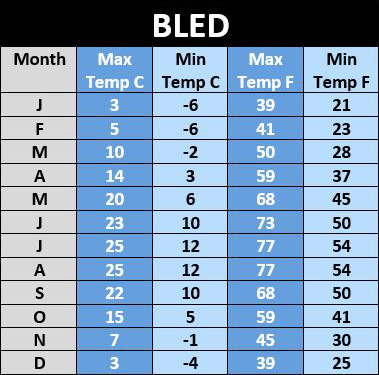
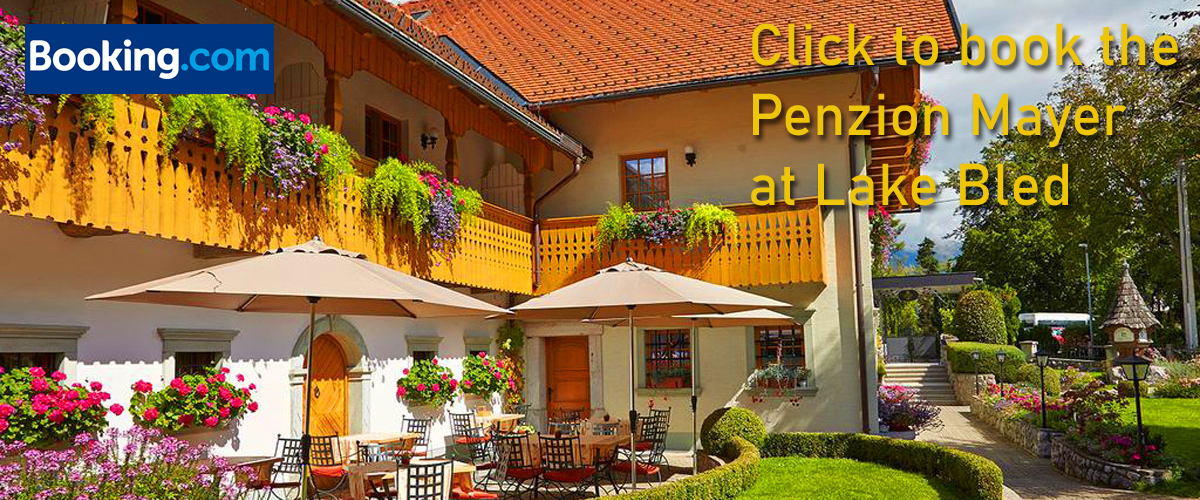

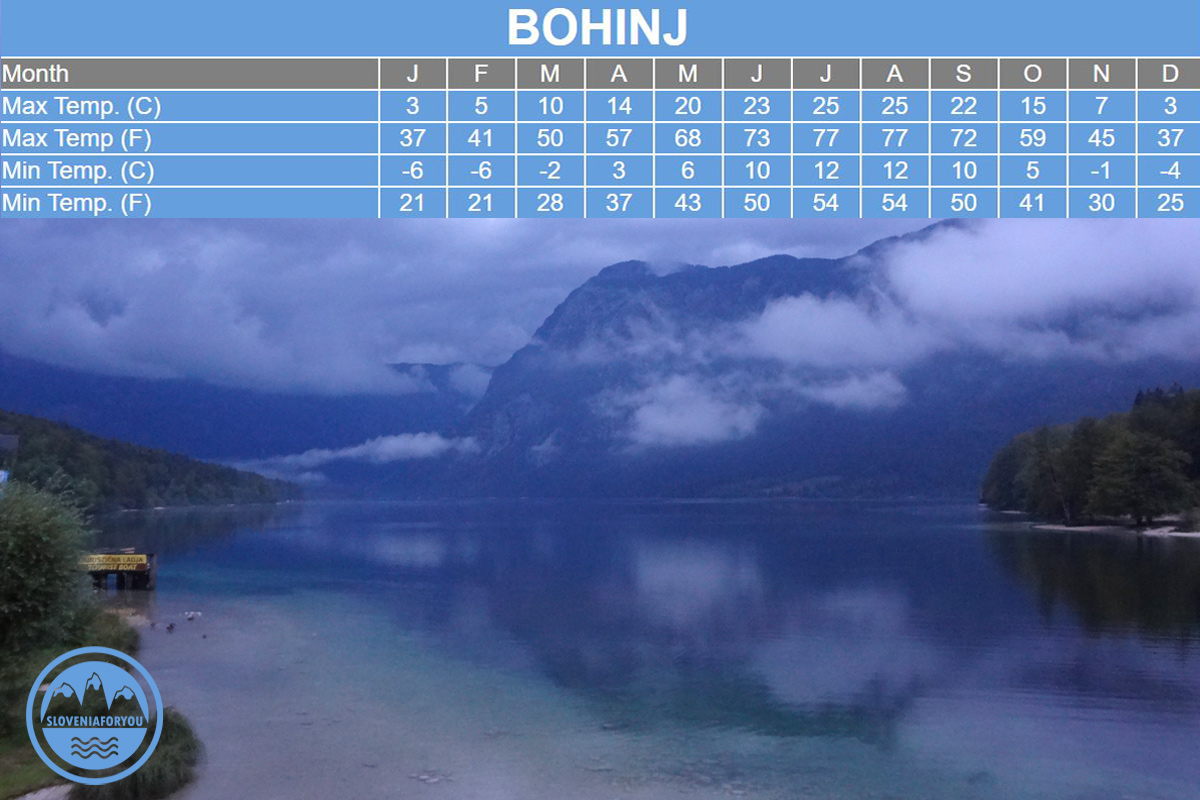
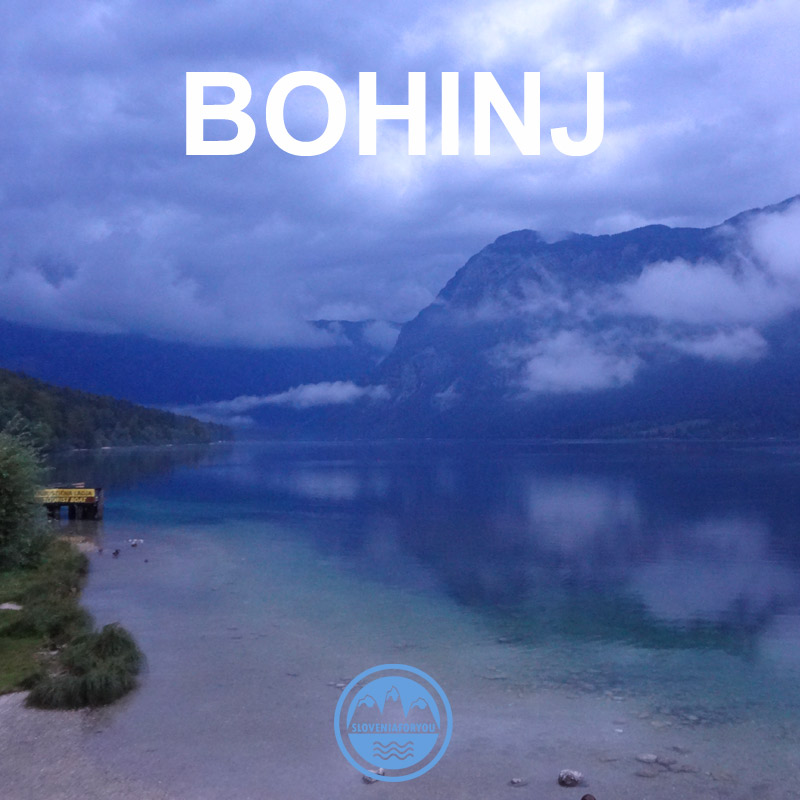
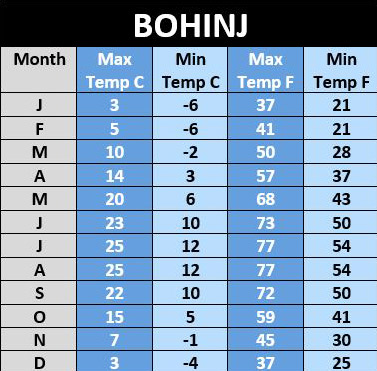
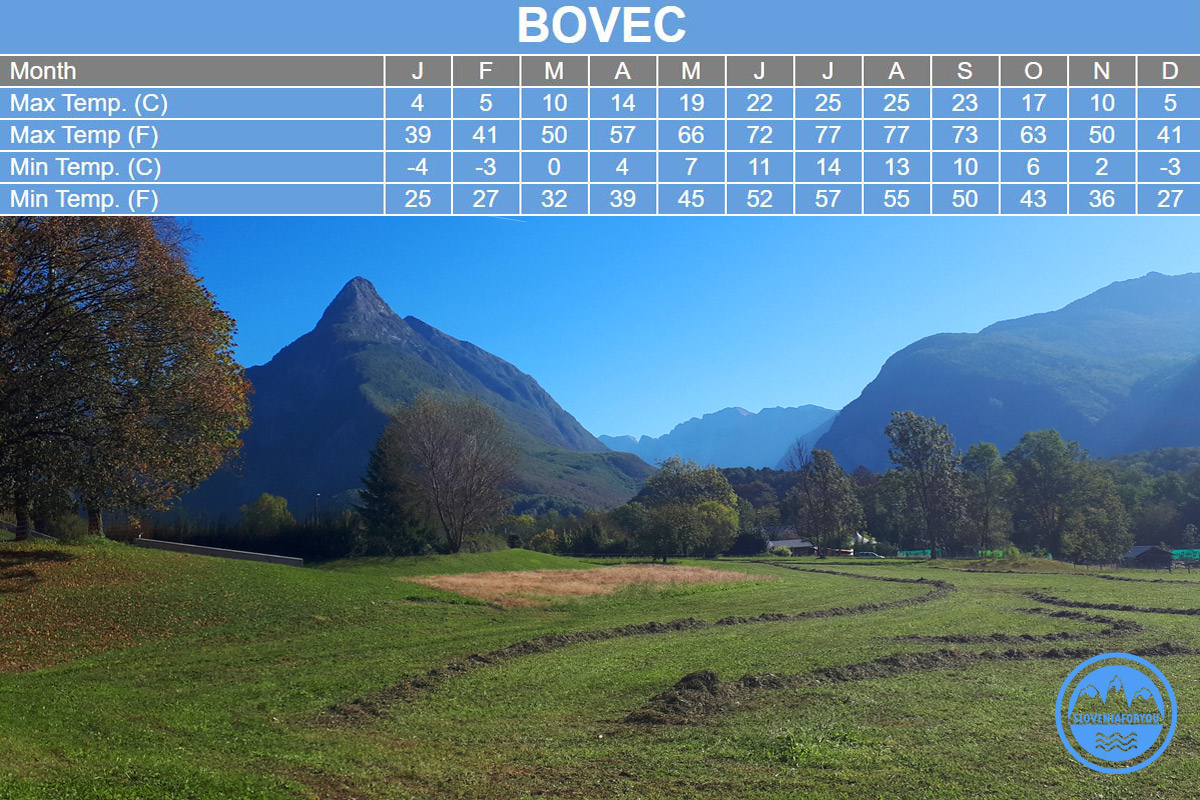
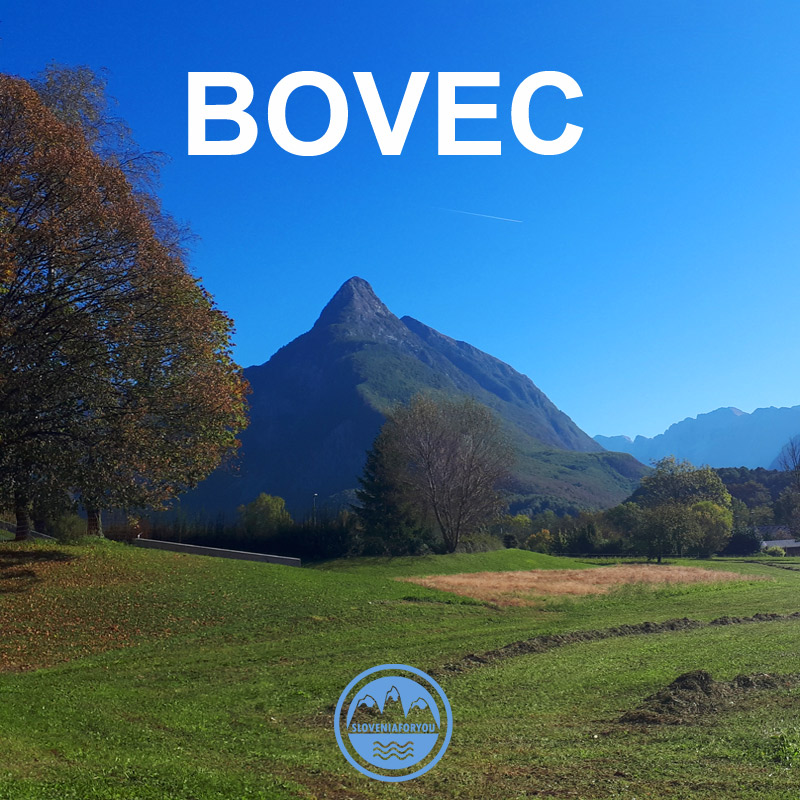
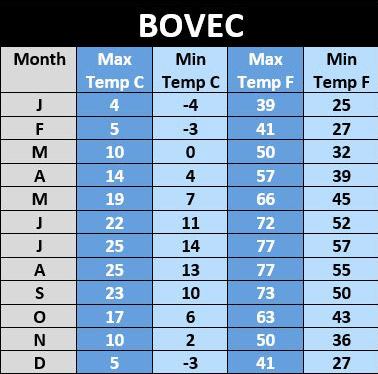
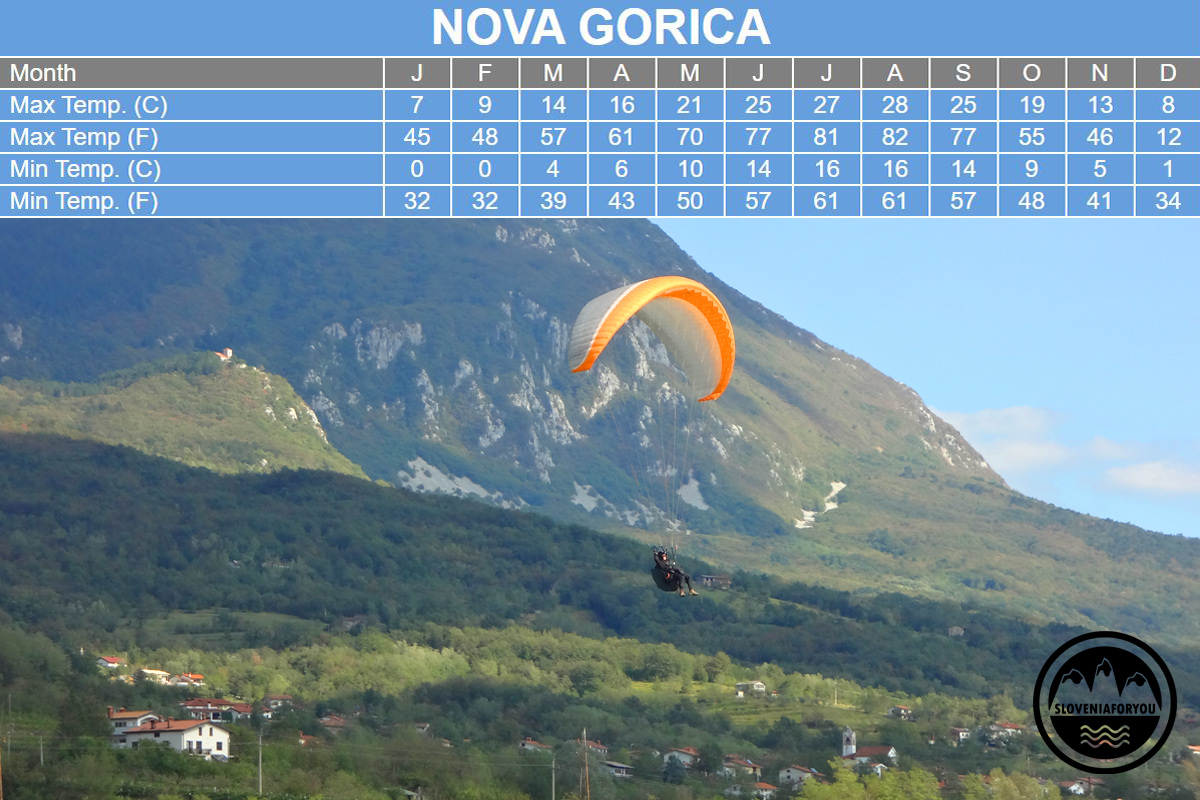
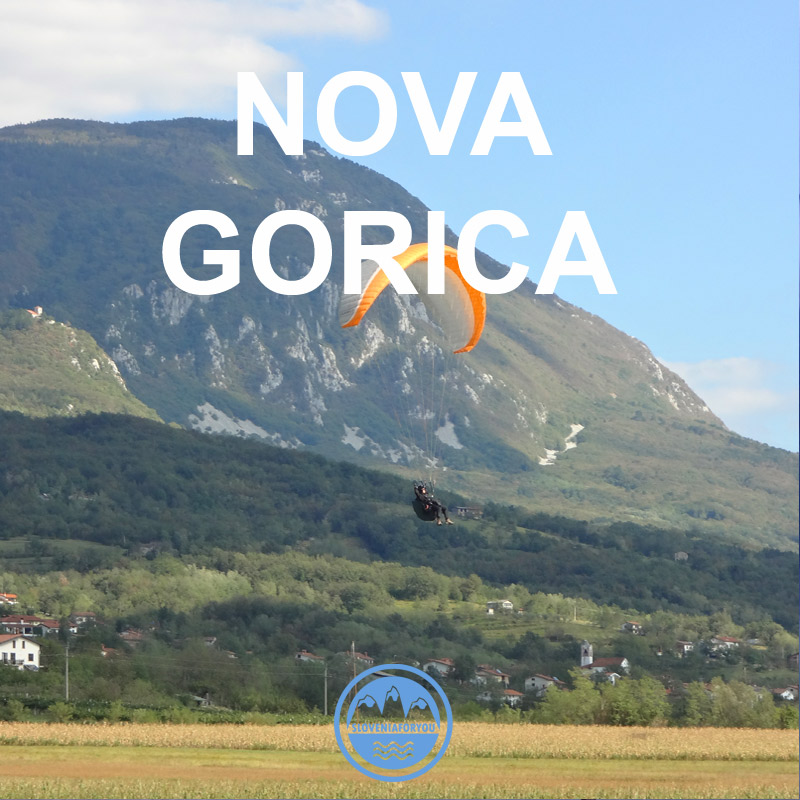
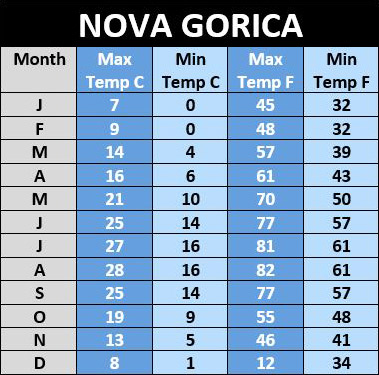
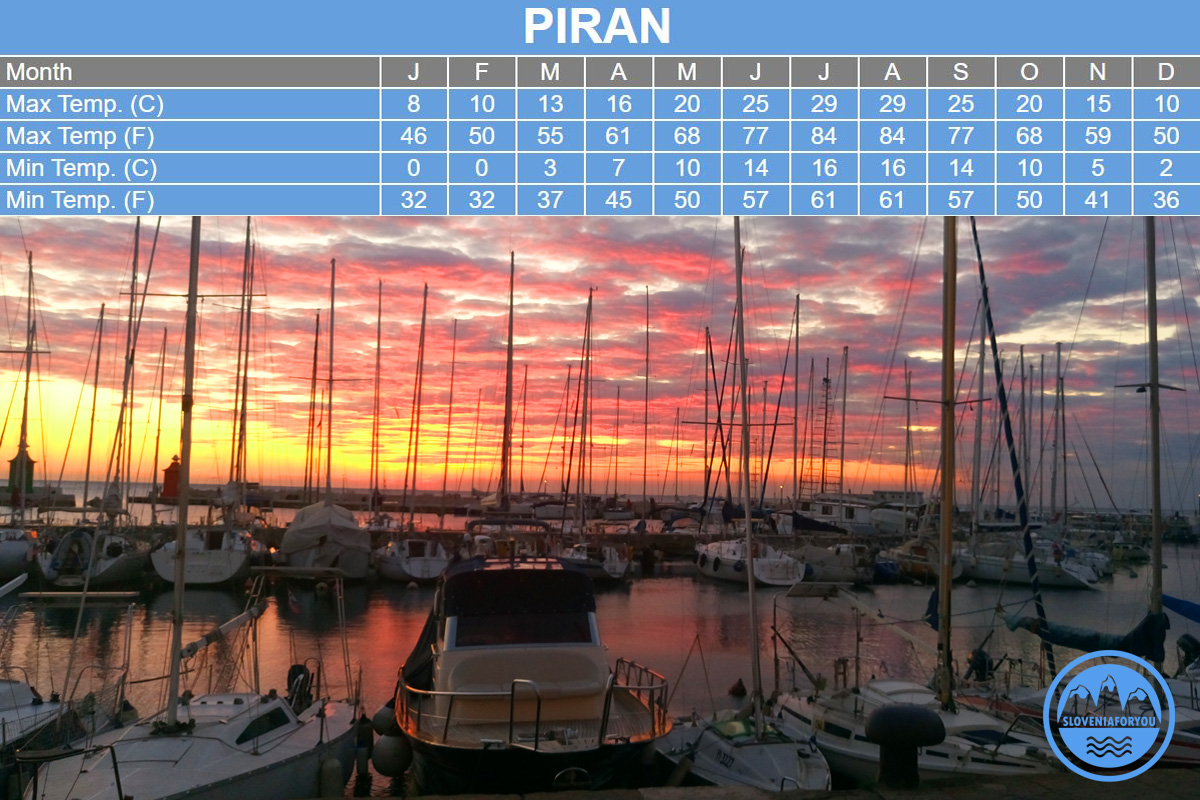
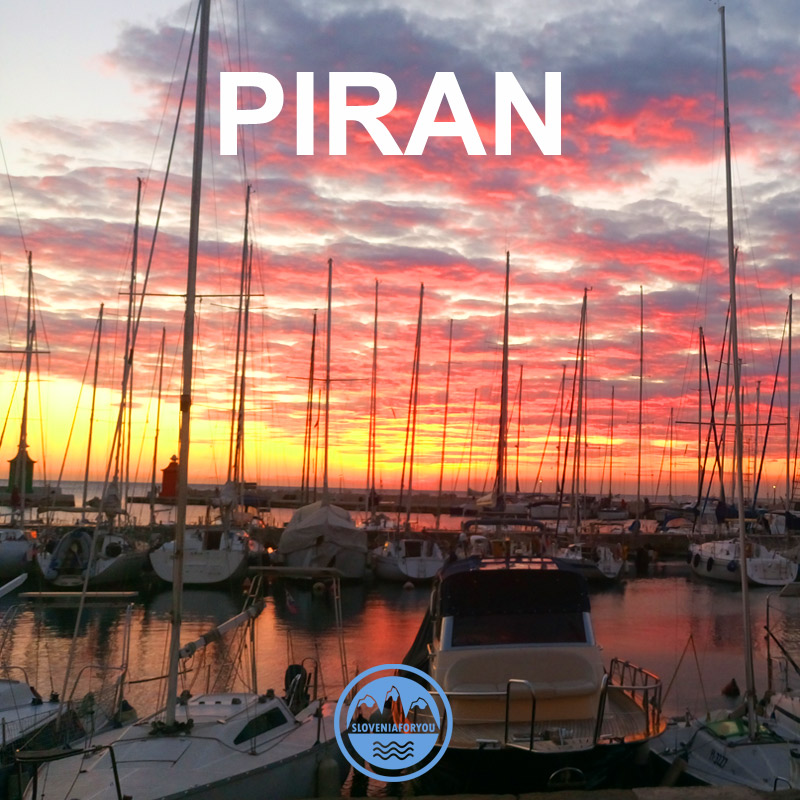

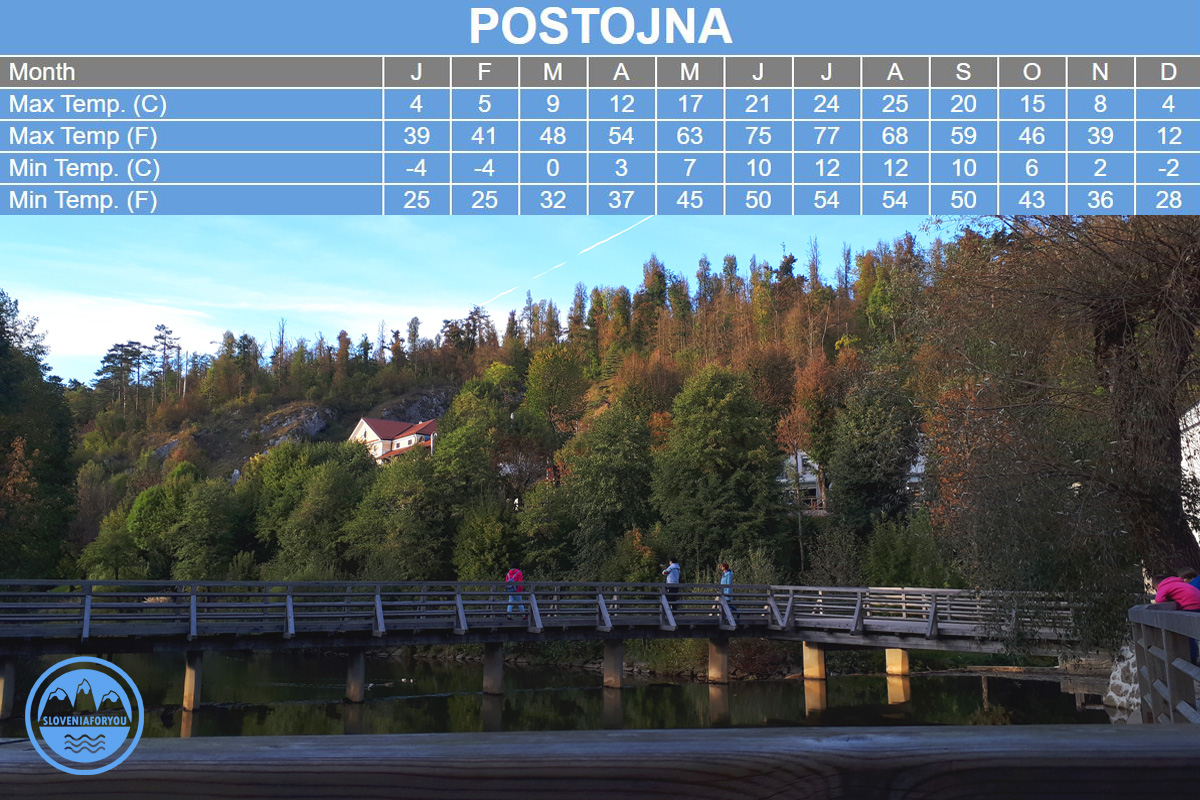
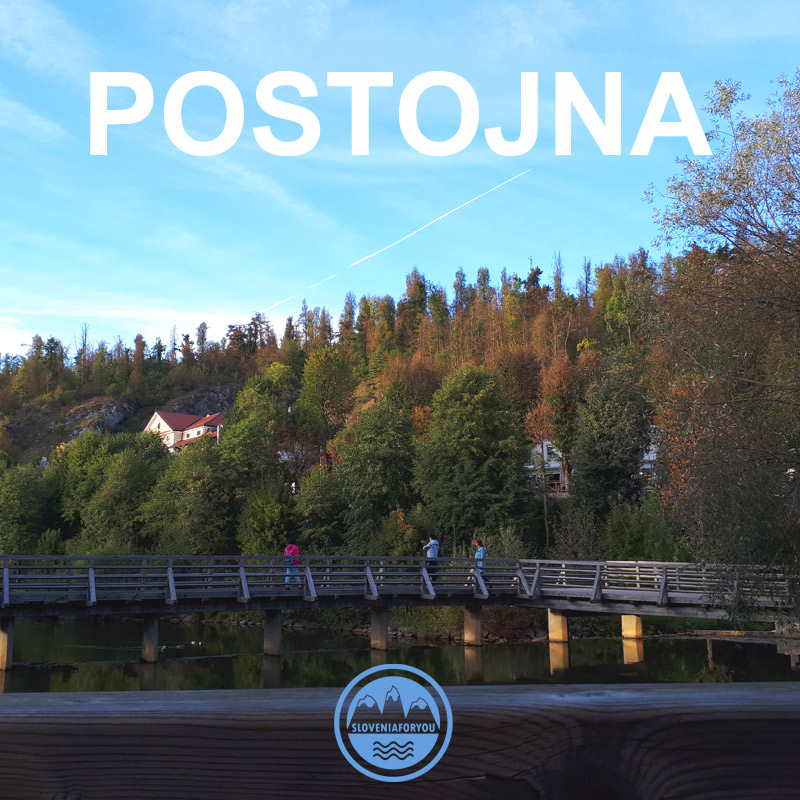
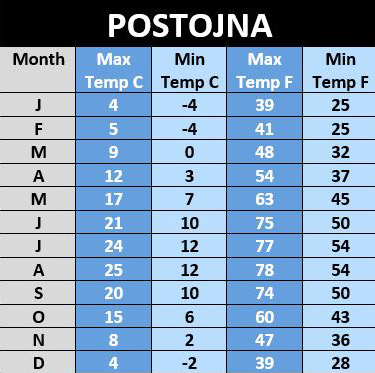


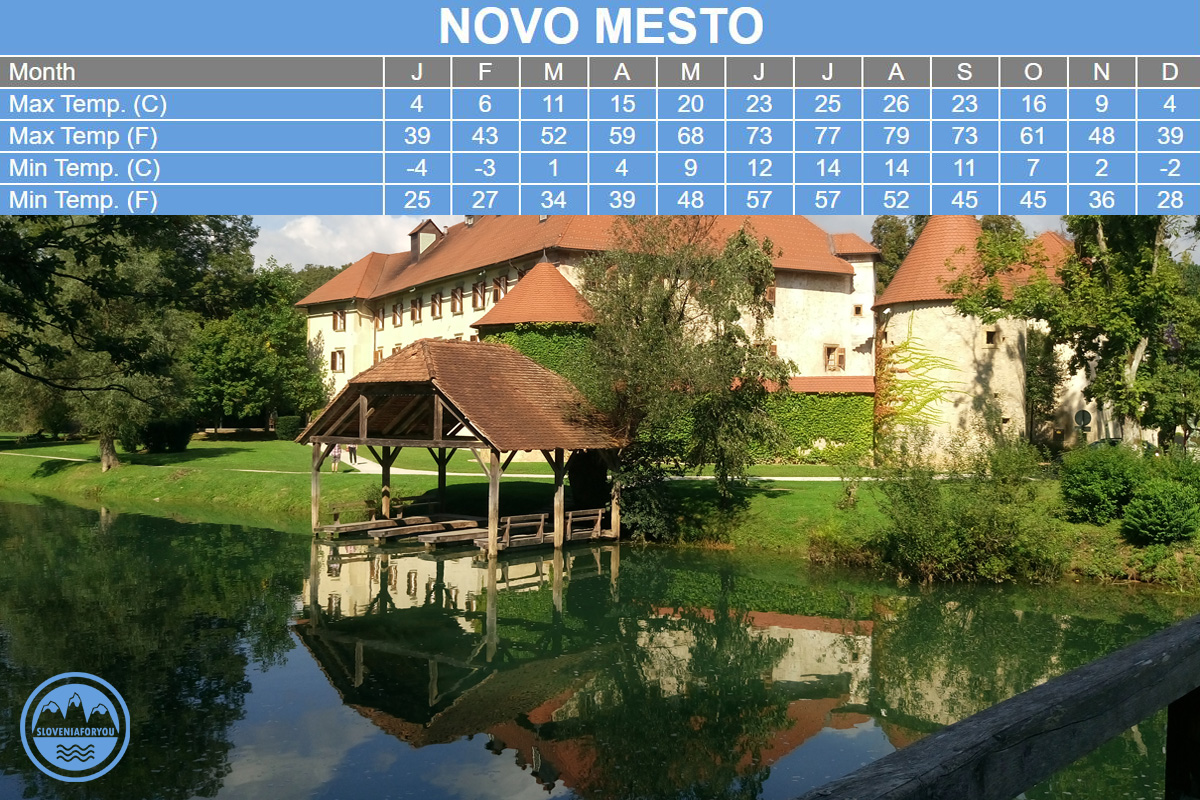
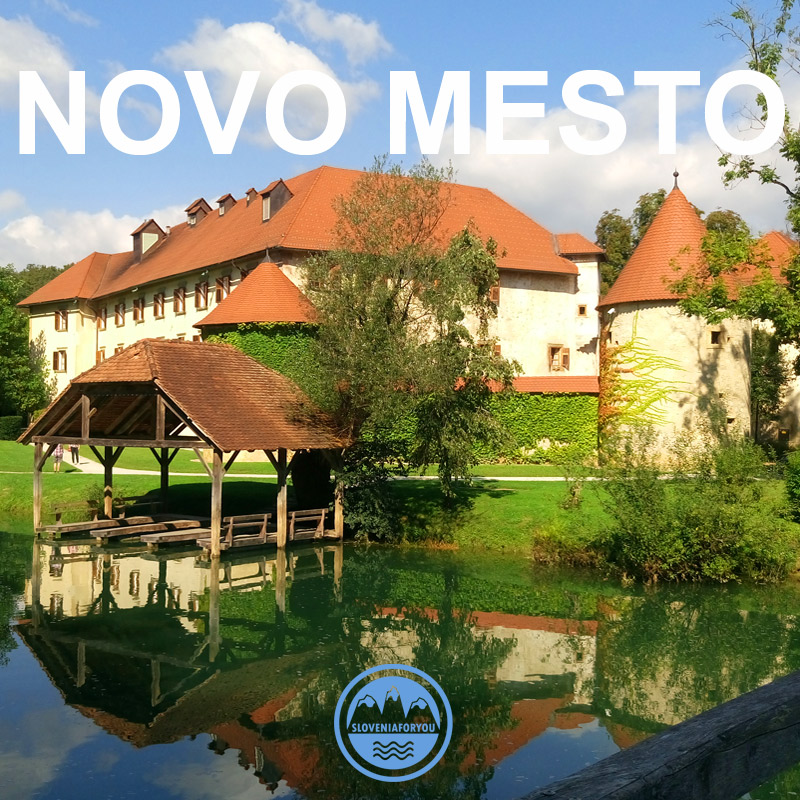
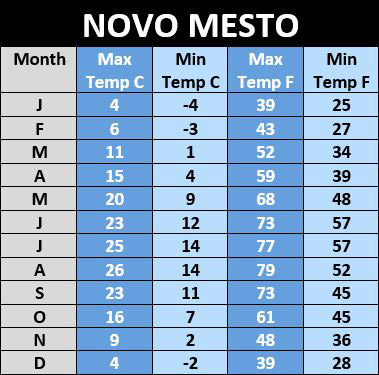
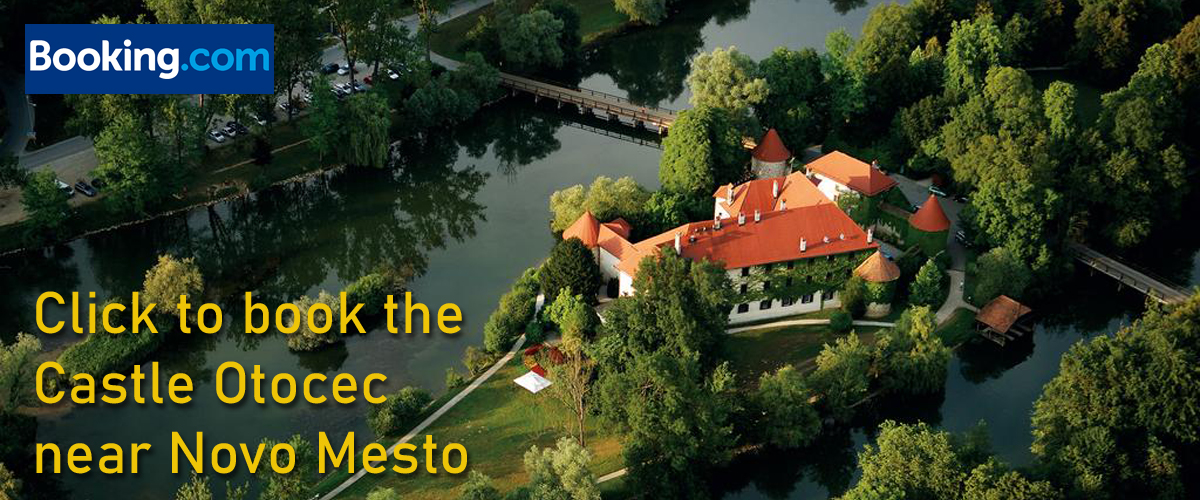

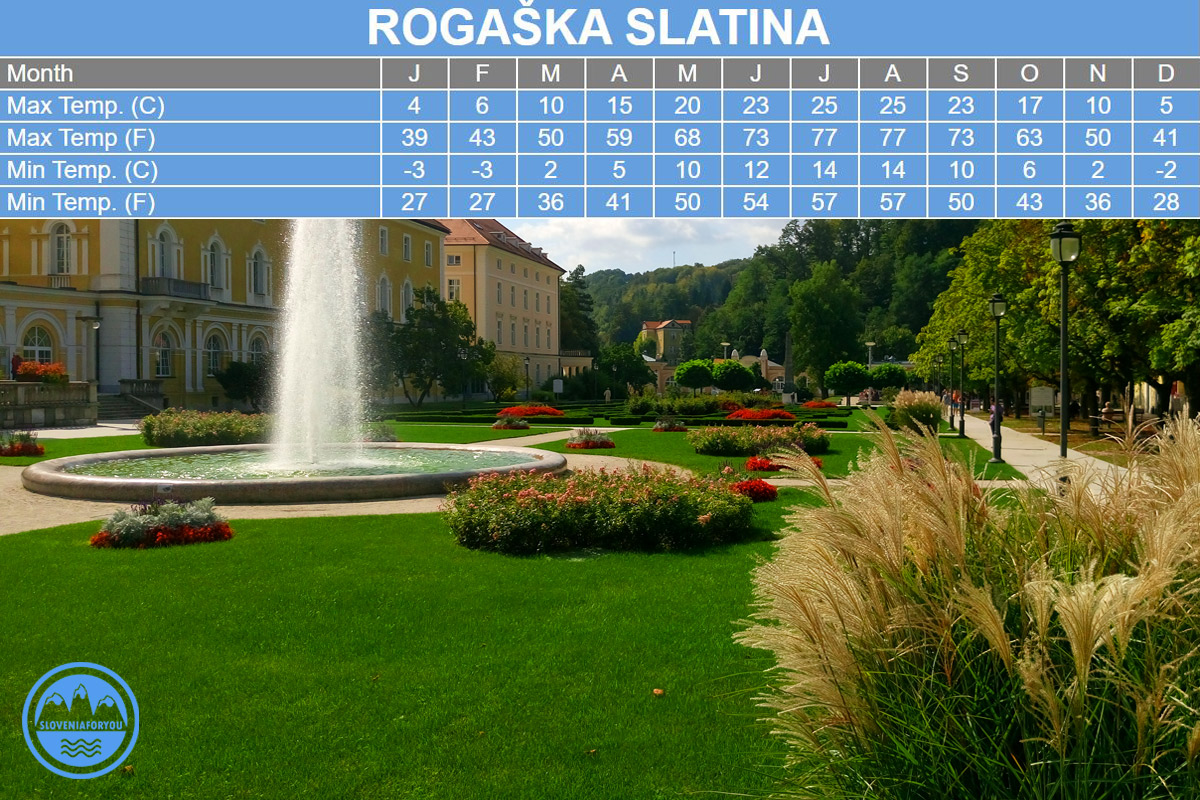
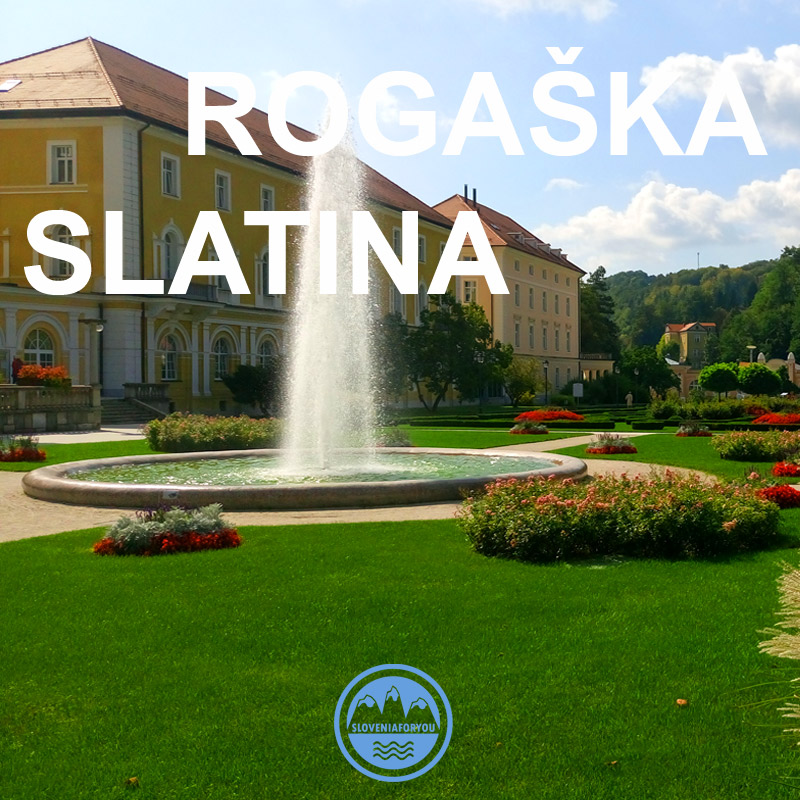
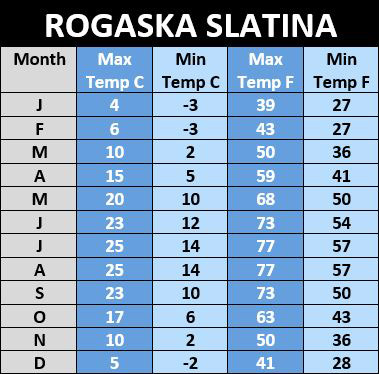
RAINFALL
Rainfall is heaviest during October/November and continuing on and off until May. It is most
prevalent in the alpine areas where the weather can change in a matter of 30 minutes.
This is why it is often hard to predict the weather around Bled and surrounding areas.
The annual amount of rainfall decreases as you move from the coast towards the northeast of the
country and most rain is brought forth by southwesterly winds.
SNOWFALL
Global Warming or not, the weather is extremely unpredictable these days and snow is a good example.
Where once Slovenia would get good regular dumps of snow, a lot of ski resorts are now using solely snow making machines for
long periods of the season because it simply doesn't snow.
Snowfall normally occurs during the months from December to February but snow can linger on the
mountains till May. Snowfall varies from year to year and from place to place and some years are
quite dry with very little snow. The deepest snowfall ever recorded in Ljubljana was in 1952
measuring 146cm thick.
Book an exciting day tour for your stay in Slovenia!
EARTHQUAKES
All of Slovenia is susceptible to earthquakes with the Upper Soca in the North-West of the country
being the most prone to seismic activity. Ljubljana and the centre of the country falls into the next
category while the the North-East is considered to be the least prone to seismic activity.
In 1348 about 500 people were killed in an earthquake near Villach. In 1511 there was another major quake
near Ljubljana while in 1895 Ljubljana experienced its worst tremor with major damage in the capital.
In 1976 a strong earthquake struck along the border with Italy. Another quake measuring 5.6 struck the Bovec region in 1998 with heavy damage reported.
This was followed by a 5.1 quake in the same region in 2004.
BURJA
The Burja is a wind that affects a large portion of the western part of the former Yugoslavia and down the
eastern coast of the Adriatic. It is most prevalent in winter and blows hard from the northeast when a high pressure
area sits over the mountains and a low pressure area lies south in the warmer Adriatic. As the air gets colder at night,
the Burja increases.
The wind can blow at speeds up to 200 kilometres plus per hour and is an integral part of Slovenia's Vipava Valley and
the Karst region which lie in the west of the country.
You will notice stones on house rooftops in these areas to stop roof tiles flying off in the strong winds.
In winter, the Burja plays havoc with local roads as snowdrifts frequently occur, blocking off roads and sometimes
entire villages (a perfect excuse for kids not to go to school!). Trucks have overturned as unsuspecting drivers
underestimate the force of the Burja.
The wind rolls off the hills in the Vipava Valley and rolls down the Karst region towards Trieste which can often be
hit hard by the Burja.
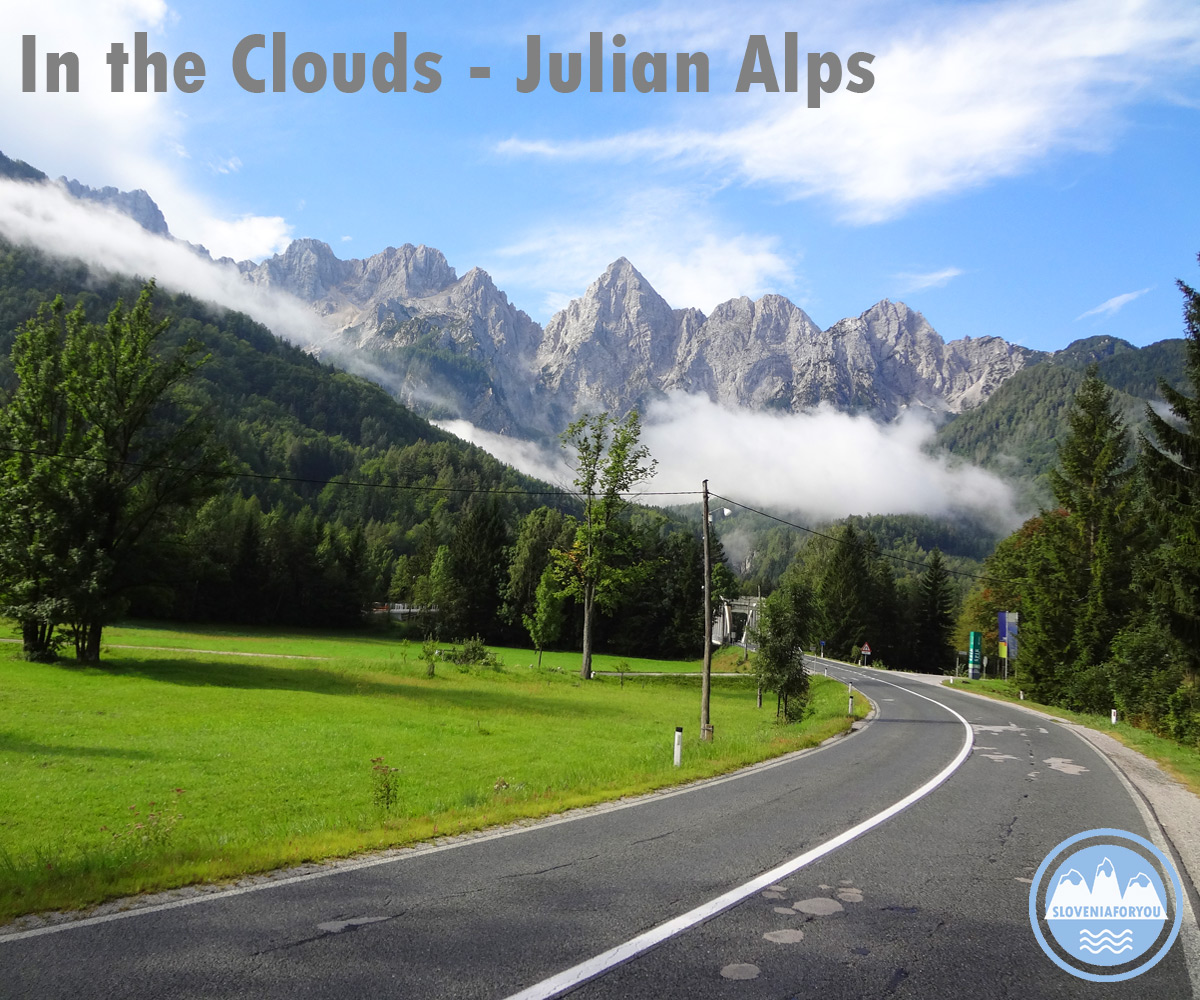

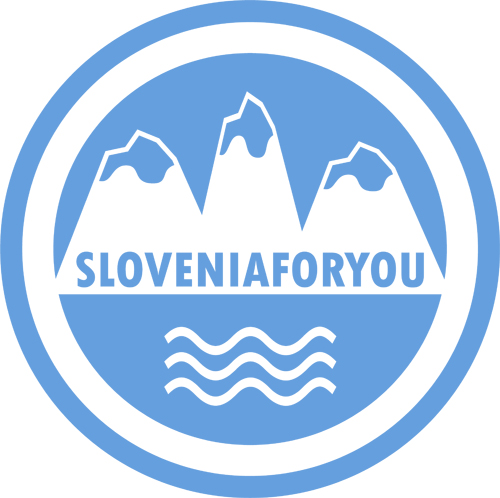
Need to fill in day? Choose a tour and have a great day out!

Choose a service for your holiday from our affiliate partners!
Accommodation Slovenia
Search for your ideal hotel, hostel, guest house or apartment in Slovenia and worldwide through our Booking.com link.
Goopti Transfers
Goopti offers the cheapest shared transfers across their network which includes Slovenia and neighbouring countries!
ATET Car Rental Slovenia
Book your Slovenian car rental with the best. ATET have offices in Ljubljana, Airport, Maribor & Koper.
Use code: SLOFORYOU in the booking for the best rates.
Zest Car Rental
Zest Car Rental is a great choice for car rental across Europe and the world, get a quote today!
如果您想预订,
请在这里给我们发电子邮件 Sloveniaforyou.com
Auf unserer Webseite finden Sie eine große Auswahl an öffentlichen und privaten Touren in Slowenien. E-mailen Sie Sloveniaforyou.com und buchen Sie Ihren Ausflug!
Dê uma olhada nas nossas ótimas opções de passeios por toda Eslovênia. Ha opções de passeios em grupos e também passeios exclusivos. Se quiser fazer uma reserva, basta enviar um email para nós aqui do Sloveniaforyou.com








